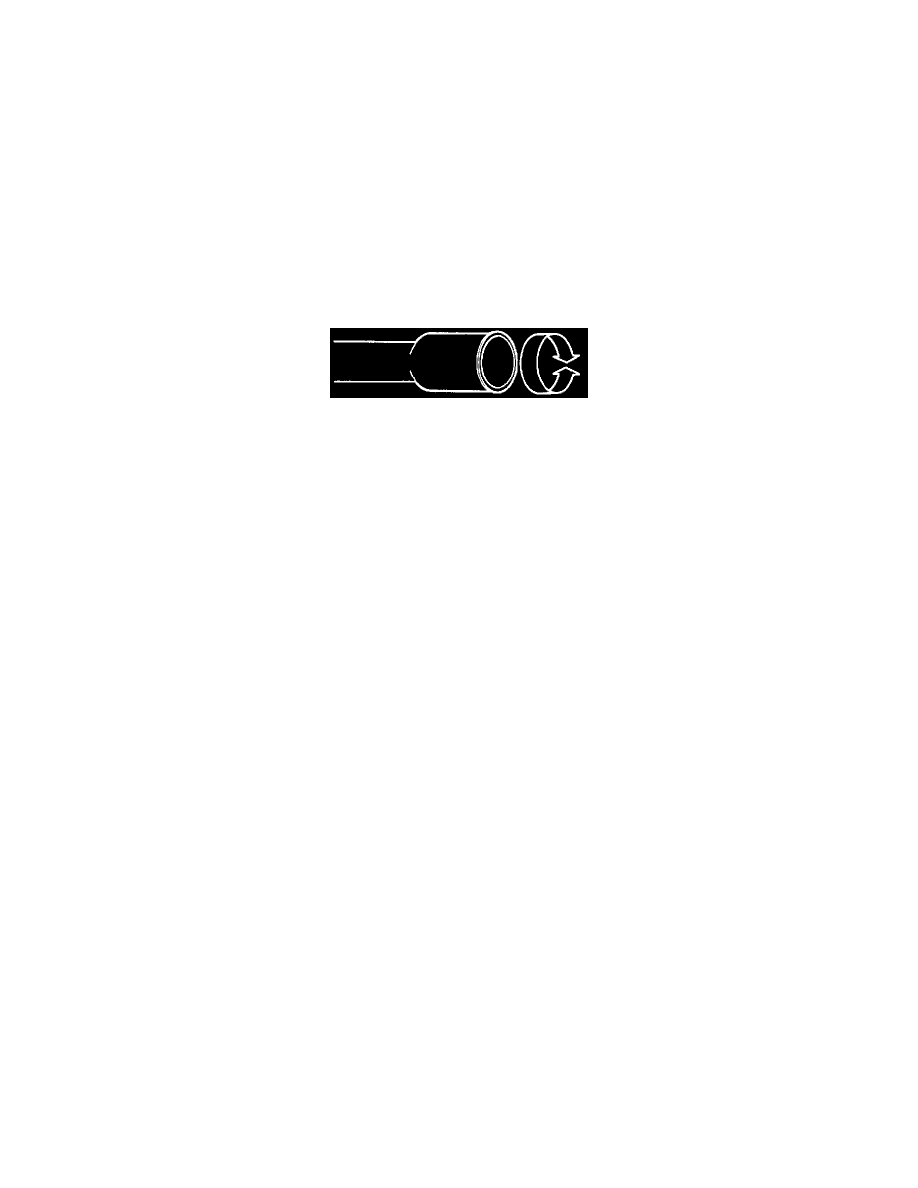F 250 4WD HD Pickup V8-460 7.5L VIN G EFI (1997)

Condenser HVAC: Testing and Inspection
ON-VEHICLE LEAK TEST
1. Verify that the manifold gauge set is capable of holding vacuum:
a. Connect the red and blue hoses together using a 1/4-inch flare coupling.
b. Connect the gauge set yellow hose to a known good vacuum pump.
c. Turn the vacuum pump ON and open both gauge set valves.
d. Operate the vacuum pump for one minute and close both gauge set valves. The low side gauge should indicate approximately 30 inches of
vacuum.
e. Allow the gauge set, with vacuum applied, to set for at least one-half hour.
f.
If the gauge reading drops during that time, the gauge set hose connections, gauges, or valves are leaking and should be serviced before
proceeding with the leak test.
2. Recover the A/C system. See Refrigerant Recovery. See: Service and Repair/Refrigerant Recovery
3. Disconnect the high-pressure line and discharge line at the condenser. Plug the lines leading to the A/C compressor and evaporator.
4. Clean A/C condenser core fittings. For threaded connections wipe any dirt or debris from sealing surfaces with a clean, lint-free rag. If the tube
fittings are the female spring lock design, check the inside of each fitting for scratches, corrosion, or debris from deteriorated O-rings. If scratches,
corrosion, or debris are found, the leak test results may not be accurate unless the fitting is properly cleaned as follows.
a. Remove any surface residue from the inside of the female spring lock coupling by polishing with 400 grit emery cloth (or equivalent). Polish
the female surface by using a twisting motion so that any scratches made will not cross the O-ring sealing surface.
b. Perform additional polishing of surface using 600 grit emery cloth or equivalent.
c. All residue from the polishing operations should be removed from the fitting by wiping with a lint-free rag.
5. For this particular test procedure, it will be necessary to use a manifold gauge set for an R-12 refrigerant system, as the manifold gauge set for the
R-134a refrigerant system cannot be attached to the leak test adapters.
Connect the appropriate test fittings from A/C Test Adapter Set D93L-19703-B to the condenser tube connections.
6. Connect the red and blue hoses from the gauge and manifold set to the test fittings on the evaporator core. Connect the yellow hose to a known
quality vacuum pump.
NOTE: The automatic shutoff valves on some gauge set hoses do not open when connected to the test fittings. If available, use hoses without
shutoff valves. If hoses with shutoff valves are used, check to be sure the valve opens when attached to the test fittings or install an adapter which
will activate the valve. The test is not valid if the shutoff valve does not open; only the hose will be tested.
7. Open both gauge set valves and start the vacuum pump. Turn the A/C system blower on low and allow the vacuum pump to operate for a minimum
of one-half hour after the gauge set low-pressure gauge indicates 101 kPa (30 in-Hg). The one-half hour evacuation is necessary to remove any
refrigerant from oil left in the A/C condenser core. If the refrigerant is not completely removed from the oil, outgassing will occur and degrade the
vacuum and appear as a refrigerant leak.
8. If the low-pressure gauge reading will not drop to 101 kPa (30 in-Hg) when the valves on the gauge and manifold set are open and the vacuum
pump is operating, close the gauge set valves and observe the low-pressure gauge. If the pressure rises rapidly to zero, a large leak is indicated.
Recheck the test fitting connections and gauge set connections before replacing the A/C condenser core.
9. If the low-pressure gauge reading rises 10 or more inches of vacuum from the 101 kPa (30 in-Hg) position in ten minutes, a leak is indicated. If
a very small leak is suspected, wait 30 minutes and observe the vacuum gauge. If a small amount of vacuum is lost, operate the vacuum pump with
gauge valves open for an additional 30 minutes. Then, recheck for loss of vacuum. If a very small leak Is suspected, allow the system to set
overnight with vacuum applied and check for vacuum loss.
A leaking fitting, gauge set or hose connection will appear as a leaking A/C condenser core.
10. If the A/C condenser core does leak, as verified by the above procedure, install a new A/C condenser core.
